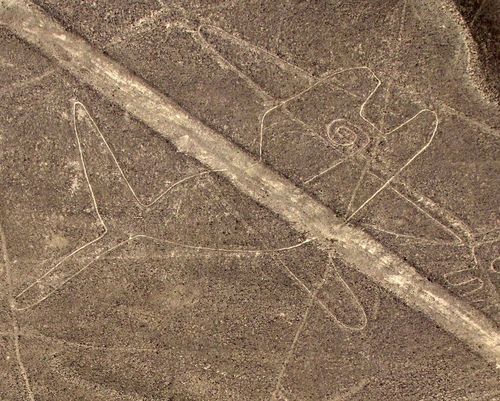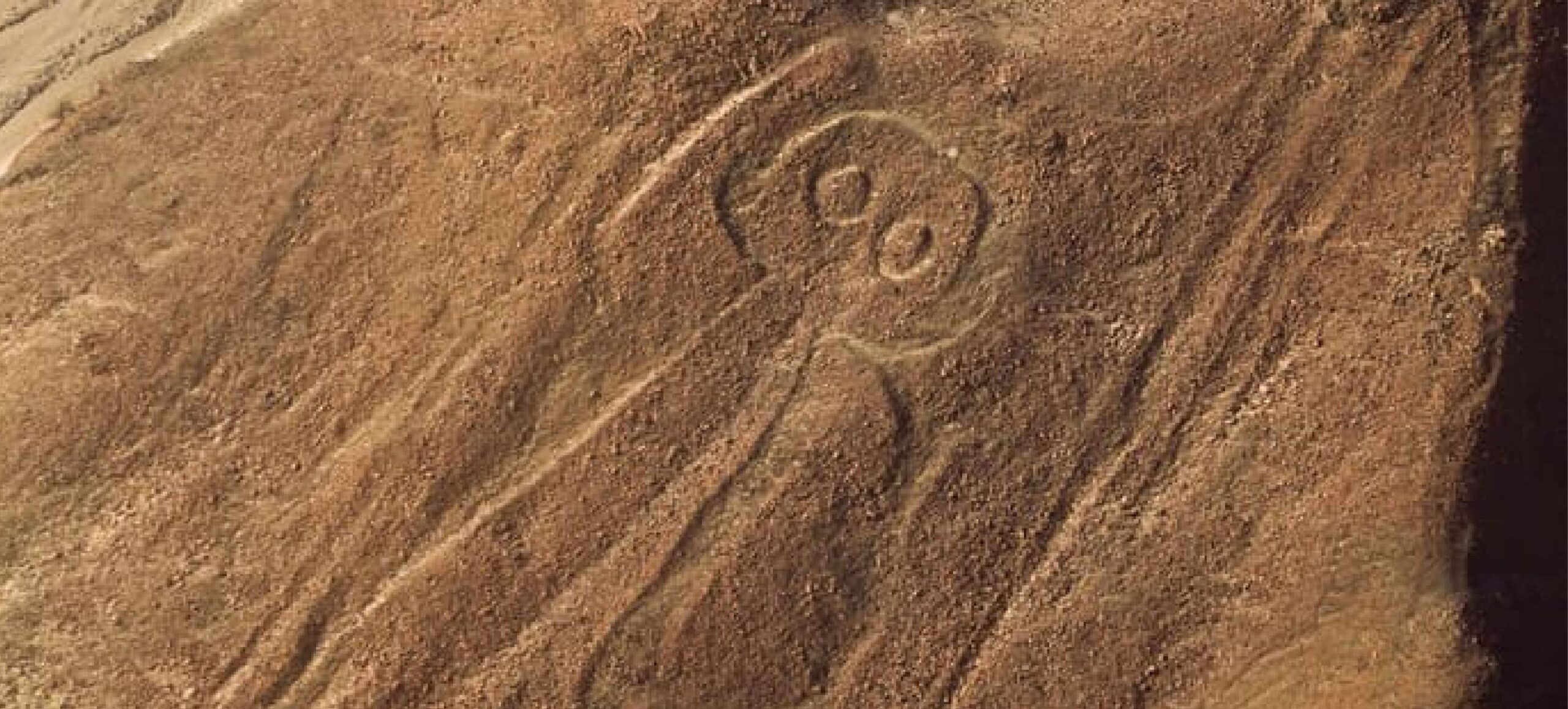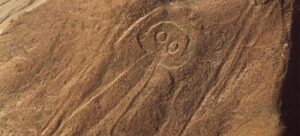In Peru, between the towns of Nazca and Palpa, you can find the Nazca Lines, one of the most enigmatic archaeological mysteries of our planet. On the ground they look like a confusing labyrinth of paths, but viewed from above, they compose gigantic figures that represent geometric shapes of animals, plants and humans.
These lines have given rise to the most diverse theories. Some say they are part of rituals made by an ancient civilization and others have ventured to say they might be related to the visits of aliens to Earth. Keep Reading to learn more about these mysterious lines.
Table of Contents
What are the Nazca Lines?
The Nazca Lines are one of the most famous landmarks in Ica Peru and their importance is such that UNESCO declared them a World Heritage Site in 1994.
These lines are geoglyphs, that is, drawings made on plains or hills. Some are simple straight lines and others are complex drawings. About 800 figures can be distinguished in total and they extend over an area of more than 500 km².
What is their origin?
The exact date of their origin is unknown, but as it is attributed to the Nazca civilization, they date sometime between the s. I BC and VII AD.
Given the precision of the shapes and enormous proportions, it is believed that the authors were able to use grids made with ropes and stakes to translate the drawings to scale. It is also assumed that the construction was directed from a high place.
What do they mean?
This is the big question surrounding these lines. Many hypotheses have been made. From their being offerings to the gods, a calendar, worship centers, ritual lines, an astronomical center to their being some sort of extraterrestrial map. However, investigations regarding these mysterious lines never end up reaching a single conclusion.
How to visit them?
Nazca is located about 450 km south of Lima, about 650 from Cuzco and another 570 km from Arequipa, three of the main tourist spots in the country. Closer are Paracas and Ica, 205 and 150 km respectively, two destinations that are also very popular and worth a stop. Here you can visit a local winery, the Ballestas Islands or the Huacachina Oasis.
To reach Nazca you will have to take a bus from Lima or book a private tour since the Nazca airport does not have regular traffic and is only used for the light aircraft that fly over the Lines.
To visit the Nazca Lines it is best to book a tour or contact one of the companies that makes the visits by plane and book a flight in advance.
<< If you want to visit the Nazca Lines with us, click here >>
Flying over the Nazca lines is un unforgettable experience. The planes are small, generally between 5 and 10 passengers. The pilots lean their planes circling the figures so that everyone can see each of the geoglyphs perfectly from their window.
Some of the most popular geoglyphs
The hummingbird
Between its two wings there is a distance of about 66 meters. According to the historian María Rostworowski, this figure is a tribute to a flying god to avoid the absence of rain.
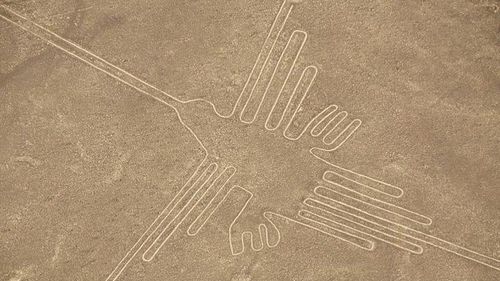
The monkey
It has a spiral-shaped tail and nine fingers, and its size is 135 meters. It was discovered by María Reiche, who considers that the tail and the hands of the geoglyph are directly related to the constellations and the rainy season.
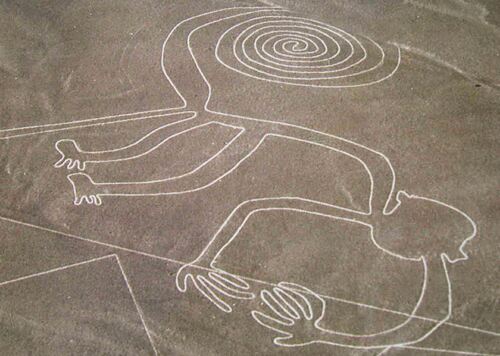
The spider
It is about 46 meters long and is believed to have been drawn to avoid droughts.
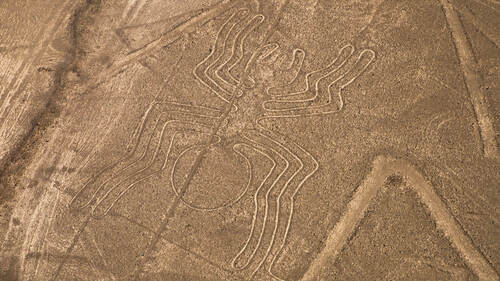
The giant bird
It is 300 meters long and 54 wide. It has a snake-shaped neck and its beak points directly towards the point where the sun rises in June. Researchers consider that it is the “Announcer of Inti Raymi“, the solar festival of the Incas.

The man-owl
Popularly known as the astronaut, is a strange anthropomorphic figure that has become one of the most popular of the Nazca Lines. Some theories say that it is a figure with a diving suit or helmet and rely on it to explain that the geoglyphs were drawn as messages for aliens.

The whale
It is about 60 meters wide and 20 high. Researchers believe it symbolizes a marine deity.
